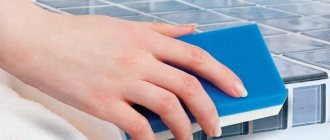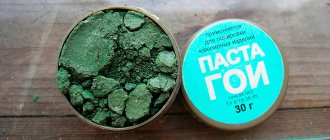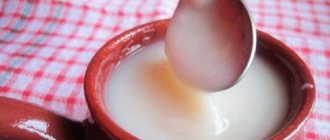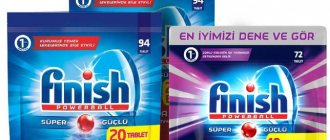Currently, gel and ballpoint pens are most often used in everyday life. However, despite modern trends, true connoisseurs prefer to write with fountain pens. The famous ink pens are especially popular among them. The products of this company are prestigious. For them to bring true pleasure while working, you need to know and be able to fill such a pen with ink and use it correctly.
How can you paint a pen?
Take it out of the handle
refill and place the writing end into alcohol.
Take a lighter and hold the ballpoint tip of the lighter
over its flame.
Do this for a short time, otherwise the tip may explode! After that, try to paint with a pen
on thick paper.
Interesting materials:
What is cream powder? What is lactase deficiency in infants? What is laser peeling? What is LEL in Gas Analyzer? What is linear planning? What is licensed beer? What is love? What feelings are there? What are macros on Keto? What are the maxima and minima of a function? What is floor mastic?
Types of refueling systems
There are three types of fountain pen refilling systems:
- Cartridge. The manufacturer produces a small container of ink that is inserted into the pen. This type is the most common due to practicality of use, but the cartridge is disposable, and to avoid problems, you need to stock up on them in advance.
- Piston converter. Such a system must be refueled independently. The peculiarity of the piston converter is that it is reusable, but the method is also less practical, since you need to buy ink and special accessories separately.
- Disposable system. There are fountain pens in the budget segment, and most often they cannot be reused, since there is no possibility of replacing the cartridge or refilling.
Historical reference
Writing
The history of writing is a separate scientific discipline, and it will be possible to fully cover it in more than one or two volumes of scientific research. However, a short excursion into history would be useful here.
The first traces of writing (in the form more or less familiar to us), discovered by modern researchers, are about 3000 years old. It was then that people first began to put words and sentences together from individual symbols. The method of writing used in these documents that have survived to this day was from right to left, as they have been preserved even now in some alphabets. The modern way of writing (from left to right) appeared later - in 400 BC. in Ancient Greece. The Greeks laid the foundation for modern alphabets, including the Cyrillic alphabet (the word “alphabet” itself is a fusion of the first two letters of the Greek letter - alpha and beta). The Latin alphabet, based on the older Greek, was formed in Ancient Rome, as a result of Roman expansion, quickly spread across many countries and has reached the present day in almost unchanged form. However, there are many modern variations of it - the style of the letters differs depending on the language.
In Perzhd, only large (capital) letters were used in writing and only from the 7th century AD. lowercase letters and combinations of uppercase and lowercase letters came into use, i.e. It is precisely this moment that can be considered the date of the final formation of modern writing.
Materials
Writing materials, i.e. We are especially interested in what people wrote and in what they wrote.
5000 BC
- the inhabitants of Sumer, who lived on the Euphrates River, wrote with sticks on clay tablets.
3000 BC
- the inhabitants of Ancient Egypt wrote with brushes made of reeds on papyrus, using colored clay as paints.
200 BC
- The Romans use a silver stylus and wax tablet, and the Greeks use reed feathers and parchment.
100th year AD
— Chinese residents write with hair brushes and ink on paper.
6th century AD
- monks copied texts from the Bible on parchment, using quills and chenilles, but for everyday recordings, pointed rods and wax tablets were still used, since parchment was very expensive.
15th century
- pen and paper began to be widely used by European scientists.
Finally, in 1888, George S. Parker founded in America and since then kept all records and signed all documents with the first high-quality pen he personally developed.
So, for 7,000 years, humanity has been using writing instruments: starting with primitive sticks and clay, going through long centuries of development and making the industrial revolution of the 19th century, people had metal pens and paper at their disposal at prices affordable for everyone. Since then, progress in the production of writing instruments has advanced by leaps and bounds.
Quite quickly, simple metal nibs were replaced by the first fountain pens, and already at the end of the 19th century several very good models appeared. By this time, those who wished could purchase quite good ones. In the 20s of the XX century, a set
made from a fountain
pen and pencil
, placed in a beautiful package, was considered an excellent gift.
In the 40s, the technical capabilities of the industry made it possible to begin producing ballpoint pens. However, they became popular only ten years later, and this is due in no small part to the development of a new one that allowed them to be used for quite a long time without replacing the rod. This new rod, unlike its predecessors, not only did not stain the paper, but also made it possible to use different colors when writing.
Relatively recently, another writing instrument appeared - . It combines the advantages of both - water-based, like in, and a ball, like in, at the same time. You will read more about it below.
Feather
If the ink supply system
- the “heart” of a fountain pen, then
the pen
is its “soul”.
When a beautiful pen
glides perfectly across the paper, an incomparable “
feel of the pen
” arises.
A quality fountain pen must have the most perfect nib.
.
Making such a feather is very difficult. Even today, when the most advanced technology exists, many stages of pen production
are performed by hand.
Materials such as stainless steel
and
gold
.
The choice of material does not have a decisive influence on the elasticity and flexibility of the pen. More significant factors are the size of the pen
, its shape and design, the thoroughness of its grinding, and special attention to the processing
of the tip of the pen
.
Therefore, if the pen is made not of gold
, but of
stainless steel
, then it can be as strong and at the same time flexible and elastic as gold.
Since steel
, and
gold
wear out quite quickly when writing,
the tip of the pen
is made of a more expensive and hard metal (usually the platinum group). This allows the pen to serve for decades while remaining of the same quality.
Very important for pen quality
has
a cut
- a longitudinal dissection of the front part of the feather into two halves. This incision is of primary functional importance, so it is performed with special tools and using special technology.
Final procedure for pen production
- this is his
sharpening
.
When a pen is sharpened
, its tip receives a certain shape depending on the functions that the pen is intended to perform.
In feather
for the number of manufacturing process operations reaches 30.
Stages of feather production
- Cutting out a template corresponding to the future pen size
- Stamping of a special pattern, company logo, etc.
- Cutting a hole to which a cut will later be made
- Curling (rolling), shaping and edging
- Soldering a tip that matches the width of the pen
- Grinding the tip (tip)
- Making a cut in the body of the pen
- Sanding and polishing
- Installing the Ink Supply System
- Examination
For more, the process of making feathers
includes some additional steps, such as
engraving and appliqué with
platinum group metal (
rhodium
,
ruthenium
). In addition, they are tested after each technological stage.
Types of feathers
Feathers
There are
straight ones
,
beveled ones
-
for calligraphic writing
. The most common are straight nibs, the least common for calligraphy.
Width
feathers are also divided into several groups.
To make it easier for you to navigate the variety of shapes and sizes of feathers
, we present here their most complete classification.
Now they are supplied to Russia with thin
and
medium feathers
.
You can also order other types of feathers
if necessary.
Attention! Never write with ink!
Before we dwell on the technical features, let us remember the history of the development of these writing instruments.
Roller design
- Frame
- Cap
- Front of the case
- Cap tip
- Inner part of the cap with snap fastening
- Rollerball rod
Clean your fountain pen
Just like your car needs an oil change, your fountain pen needs an internal cleaning. You can clean it once a month, and this will save you from going to a pen specialist. After you wash the ink out of your pen with water, we recommend rinsing it with a mixture of one part household ammonia and two parts water. Fill and empty the pen three or four times to remove any debris. Then rinse the handle with ammonia solution and three or four times with tap water. This is especially important if you change brands or colors of ink or use the same cartridge (some inks interact with each other, creating a viscous creature).
On our website you can purchase a new, original, high-quality one, and timely care for it will give you the opportunity to keep your records for a long time.
Even if you simply rinse the handle with tap water a few times, irregularly, you will be able to prevent most problems associated with clogging. "Important Note": Never use ammonia on handles with aluminum parts.
Ammonia eats aluminum very quickly! Also, do not soak nitrocellulose pen containers in ammonia for long periods of time. This may cause the plastic to become discolored.
Many piston-fill pens, such as those from Pelikan and OMAS, have difficulty turning if the ink destroys the container inside. In extreme cases, such destruction can damage the handle gasket or even break the turning mechanism. And if you notice how dry ink accumulates in the clear part of your Pelikan pen, then you will also understand how this problem occurs and what measures you need to take to solve it.
Pens with a cartridge or converter also need to be cleaned regularly - especially if the cartridges are used most often. Never leave your pen for long periods of time with a cartridge full of ink in it. It often turns out that the pen filling system with a cartridge or converter is the only part of the pen that is rarely washed. However, these pens are just as easy to handle as piston-filled screw-on pens. Use a converter to rinse the handle with a mixture of one part household ammonia and two parts water.
A special “de-soldering bulb” from Radio Shack, which costs about $5, is a great tool for cleaning pens. Remove the nylon tip, move the light bulb hole to the handle section, try to pump everything out from there. An ear cleaning syringe may also work. By using household ammonia as a cleaner, many dirty pens can be cleaned.
If the inside of the pen is too dirty to clean, then, of course, send it to us for cleaning. We have the specialized tools to handle even the toughest problems, such as waterproof ink damage. However, since we are not always able to immediately recognize the poor condition of a pen when it arrives for inspection, we sometimes increase the price for cleaning the ink filling system. We often encounter complaints that the pen skips or dries out, and the nib of the pen is considered to be the culprit.
Ink: Do's and Don'ts?
We get a lot of questions about what ink to use and what not to use. The first thing we should mention is that we are not ink experts. However, we have found over the years that India ink and waterproof ink often cause problems in fountain pens that are not properly cleaned after each use. Since this ink does not dissolve in anything that would not dissolve the pen or refill system, clogged parts are very difficult to clean. We have also found that some red ink causes clogs in the refill system.
What's the safest solution? First of all, try to use strictly prescribed fountain pen inks, like the ones we sell on our own ink page. If you want to experiment, try writing with carbon-based inks or pigment inks specifically designed for fountain pens, such as those made by Platinum and Sailor. And, no matter what ink you use, constantly cleaning your pen's filling system will ensure it has a long and happy life.
Problem with clogged filling system
So, here are examples of three severely affected systems. They all have a place to store ink, but since the ink had spread throughout the ink storage system, ultrasonic cleaning could not clean it completely. The problem with the Waterford, the taller model in the photo, was that the pen would stop writing after a few sentences. Since the ink channel was not completely clogged, some ink still appeared. However, when a vacuum is applied to the reservoir, no air is returned to replace the amount of ink that has been used. There were the same complaints about the model from Namiki, which is lower. The bottom of the Pelikan M600 system was completely clogged, so no ink or air could get through. Notice how carefully all samples in the collection are filled out.
Ultimately, complete manual cleaning allows all three of these systems to be used in full operational readiness - but subject to cleaning, albeit not always regularly. Then none of the system channels will need such close attention. Regular cleaning, as described above, can save your pen from having to be replaced.
If you have a problem and you want us to solve it...
We can deal with it and resolve it properly.
Before:
After:
On the left is a very clogged and very unhappy system from Hysek
and a pen filled with red ink. After intensive cleaning, we returned them to their owners in working order, and even adjusted the nib and ink distribution system, even better than before.
Despite all the variety of stationery supplies, the fountain pen is still especially popular. Parker Pen Company is one of the well-known companies specializing in the production of such writing instruments. She is the creator of the famous Parker brand. But are the fountain pens from this manufacturer really that good?
A short excursion into history
Who would have thought that the first analogues of modern fountain pens appeared around 600 AD? e. However, they acquired a metal body only in 1803. In turn, the first pens with metal nibs appeared closer to the beginning of 1830. However, such office supplies had an extremely short service life.
Shortly before the modern Parker fountain pen was introduced, many manufacturers began producing nibs made from rhodium, osmium, iridium, and also gold (meaning 14- and 17-carat). This approach made it possible to increase the service life of the tips on the handles and marked the beginning of a new mass production.
PenMania
It is an indisputable fact that a good (see Remark 1) fountain pen glides easily across the paper, requiring virtually no pressure. Your hand will not get tired and you will be able to write for hours (for those who need it) without fatigue. This fact is especially noticeable to those who switched to writing with a pen, and then happened to write something with a “ball”. Oh how annoying this is.
But! There are good ballpoint pens/refills and there are also mediocre fountain pens. About them - separately, not in this article.
Fountain pen is health
Many of us spend a lot or a lot of time in front of a monitor and keyboard with a mouse. Many are at risk of developing carpal tunnel syndrome due to fairly monotonous hand movements when working on a computer.
I know of at least one case, probably more, where a professional “keyboard worker” was able to recover from carpal tunnel syndrome by trying to write with a pen and making a rule for himself regularly, once a day, to write something with a fountain pen on an A4 sheet of paper.
The recovery is due to the fact that when writing with a pen, the hand makes smooth movements, which are radically different from the movement when working with a mouse and keyboard.
A fountain pen is stylish
The traditions of fountain pen production are based on hundreds of years of experience. Pay attention to the care and taste with which good pens are made. They are simply pleasant to hold in your hand. And if a neighbor in the lecture hall or a work colleague sees such a pen in your hands, you are guaranteed [respectful] attention.
You can choose a handle for yourself with either a conservative timeless design or
as well as with a modern technocratic appearance. According to your style.
Writing with a pen is economical
If you write a lot as part of your academic or professional duties, then most likely you write dozens of ballpoints per year. A ballpoint rod of acceptable quality costs 40-60 rubles (we are talking, for example, about rods made in Japan by Pilot, Pentel, Zebra and the like) (see Remark 2). The total amount adds up to 1000 rubles per year.
Good quality Parker and Waterman inks in the size of two bottles will more than cover your annual needs. And they will cost you only 200-350 rubles per bottle.
And if you use good Rainbow ink for 20-30 rubles per bottle... the benefits are off the charts.
The pen forms (with your help) beautiful handwriting
Why do you need this? In addition to the aesthetic satisfaction of the work you have done, clear, neat, stylish handwriting can serve you well when submitting an application somewhere, highlighting yours among others with similar content. Perhaps this will change your life...
Widest selection of ink colors
You can choose the color of ink to suit your mood, the color of your tie or handbag, the color of the pen itself, the color of your eyes, etc. Take a look at just a selection of colors from just one ink company, Diamine.
This is difficult to do when choosing colors for a ballpoint pen.
Feather is a new sensation every day
Most fountain pens write differently. This applies to the thickness of the nib and line, the saturation of the line, the elasticity of the nib, the shape of the nib, the shape of the pen and the material from which it is made.
You can choose one pen with which you will write constantly and which suits you best.
Or you can collect a small collection of several pens and change them every day (week, month) and get new sensations from part of your activity (writing) every time you change your writing instrument.
This is not so easy to do with a ballpoint pen and rollerballs.
Contraindication 1
You don’t want to “bother” with choosing a pen, refilling ink or ink cartridges, improving your handwriting, and generally don’t bother with any issues in your life. Then don't waste your time and don't bother. The pen is not for you. Bye.
Contraindication 2
You write a lot on forms that require firm pressure from the writing unit in order to make a copy through the carbon paper. Or you write a lot on bad paper, on which any ink simply bleeds (again, some blank forms).
Video material
A Parker pen or any other ink-based pen is far from being a writing instrument; rather, it is a stylish accessory for a business person. Parker ink remains saturated for a very long time and is absorbed into the paper instantly. They do not spread on the paper and correspond to the design of the pen in terms of thickness. Use your writing accessory with pleasure, and we’ve told you how to refill it with ink. Use our tips and recommendations, and your fountain pen will serve you for decades!
What rods fit Parker?
Please note that regular Parker QUINK ballpoint refills and Parker GEL gel refills are suitable for Parker ballpoint pens from all series: from Duofold to Vector. Offering an alternative writing feel with a silky, smooth line.
Interesting materials:
What is Princess Jasmine's last name? Which group of rocks is classified as Metamorphic? What is the hierarchy of wolves? Which Microsoft Office program is designed for data management? Which keyboard key is used to enter the command? Which key on the keyboard deletes? Which button on the remote controls HDMI? Which button deletes from left to right? What is the commission when paying Sberbank online? What large tropical desert is located on the Arabian Peninsula?
How to refill if there is no ink
It is not recommended to use substances other than original ink, but if you urgently need to refill your pen, then use the following materials.
Is it possible to refill with stamp ink?
Refilling your printer with printer ink will be the last thing you do for your pen, since non-fountain pen inks contain glycerin and take a long time to dry. The stamp ink is absorbed deeply into the material, so it will be very difficult to clean the piston in the future.
Also, such ink has a thinner consistency, which can lead to smudges. When writing on paper, the paint will take a long time to harden, so you will often smear the text. This method should only be used as a last resort.
Is it possible to refill mascara?
The microparticles of ink are larger than those of ink, so the pen will quickly clog. In addition, the ink dries quickly, and after a few hours your pen will stop writing. It is also almost impossible to wash it off, since modern mascara has a moisture-resistant effect. This option is ineffective and useless, and you risk ruining the pen.
A fountain pen costs a lot of money, especially if it's a Parker. To ensure it lasts as long as possible, clean and rinse it regularly and use only appropriate ink and designs.











